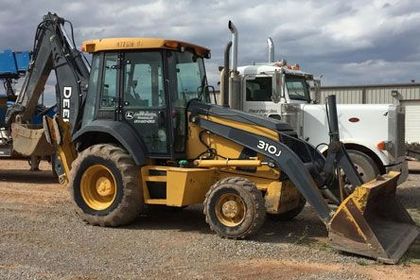Why Superior Oilfield Rentals is transforming equipment management
Everything About Oil Field Equipment and Pipeline Equipment: Secret Insights and Vital Info
Oil field equipment and pipeline systems play a pivotal function in the oil and gas industry. They are essential for the reliable removal and transport of hydrocarbons. Secret parts, such as drilling rigs and tank, directly impact functional success. Innovations in technology promise to enhance security and effectiveness. Recognizing these elements is crucial for anybody entailed in or thinking about this complex market, as it establishes the stage for much deeper expedition of industry techniques.

Review of Oil Field Equipment
As the need for oil continues to expand, understanding the devices used in oil areas comes to be progressively necessary. Oil field equipment incorporates a large variety of machinery and devices vital for expedition, extraction, and handling. Secret elements consist of drilling rigs, which are critical for getting to oil reservoirs, and production tools, such as separators and pumps, that assist in the extraction process. Superior Oilfield Rentals Texas. Additionally, tank play a substantial duty in holding petroleum prior to transportation. Security equipment, consisting of blowout preventers and stress gauges, assures functional safety and security and performance. Each piece of equipment functions cohesively to maximize production and keep reliable workflow. Familiarity with this equipment is very important for experts in the sector to guarantee successful procedures and adherence to safety criteria
Types of Drilling Rigs and Their Applications
Drilling rigs function as the foundation of oil extraction operations, with various types created for certain geological problems and operational requirements. The most common kinds consist of rotary exploration rigs, which utilize a turning drill little bit to pass through the earth, and cable television device rigs, recognized for their percussion boring method. For overseas procedures, jack-up rigs and semi-submersible rigs supply security and support in marine atmospheres. Additionally, directional exploration rigs enable operators to drill at angles, getting to down payments that are not up and down easily accessible. Each gear kind has unique benefits, maximizing performance and security based on the exploration setting. Choosing the appropriate gear is necessary for maximizing source removal while minimizing environmental effect and functional expenses.

Necessary Pipeline Equipment and Their Features
Pipeline infrastructure is important for the transportation of oil and gas from removal websites to processing facilities and end-users. Various necessary devices elements facilitate this process. Pipelines themselves act as the key conduits, made to withstand high pressure and corrosive materials. Pump stations are critical for preserving flow by enhancing stress along the pipeline. Valves play an essential role in regulating flow and separating sections for upkeep. Furthermore, fittings and ports ensure secure joints in between pipeline sections. Checking systems, including flow meters and pressure sensors, are important for identifying leaks and optimizing flow prices. Lastly, pigging equipment is used for upkeep and cleaning, protecting pipeline honesty and performance. With each other, these components develop the backbone of a trusted pipeline system.
Developments and Technologies in Oil and Gas Equipment

Security and Maintenance Practices in the Oil Market
While the oil industry has made considerable strides in modern technology and effectiveness, the importance of durable safety and security and upkeep practices can not be overstated. Efficient safety procedures are vital to protect workers and the atmosphere, reducing the danger of crashes and spills. Normal assessments and upkeep of devices aid recognize potential issues before they rise, ensuring operational integrity. Educating programs for staff members are important, highlighting the value of security recognition and emergency reaction procedures. Furthermore, adherence to sector guidelines and requirements promotes a culture of safety. Executing innovative surveillance modern technologies can better boost maintenance practices, permitting for real-time analyses of tools conditions. Inevitably, prioritizing safety and security and upkeep is essential to the sustainability and success of the oil market.
Often Asked Concerns
What Are the Ecological Effects of Oil Field Equipment?
The environmental impacts of oil field equipment include habitat damage, water contamination, and air contamination (Superior Oilfield pipeline equipment rentals). In addition, tools malfunction can bring about spills, negatively impacting wildlife and ecological communities, highlighting the requirement for rigorous laws and surveillance
How Is Oil Field Equipment Transported to Remote Locations?
Delivering oil field equipment to remote locations usually index includes specific automobiles, helicopters, or barges. Logistics companies coordinate courses, guaranteeing equipment shows up safely and successfully, taking into consideration terrain and accessibility to decrease hold-ups and make best use of efficiency.
What Governing Specifications Govern Oil Field Equipment?
Regulatory standards regulating oil field equipment largely include safety and security, environmental defense, and operational effectiveness standards. Agencies such as OSHA and EPA apply these policies to assure risk-free techniques and minimize ecological influence in oil removal procedures.
What Abilities Are Required to Run Oil Area Equipment?

Exactly How Do Oil Rates Affect Equipment Demand and Usage?
Oil rates considerably affect equipment need and usage. Higher costs usually lead to enhanced exploration and manufacturing activities, driving need for machinery. Conversely, reduced rates might result in reduced procedures and reduced need for devices.